Ali Fryer-Bovill, Teacher of English at WHS, and her family Bov, Darcey and Freddie invite you to a special, travel-inspired WimTeach this week: around the World in 7 menus. Tuck in…
“Travel is fatal to prejudice, bigotry, and narrow-mindedness, and many of our people need it sorely on these accounts. Broad, wholesome, charitable views of men and things cannot be acquired by vegetating in one little corner of the earth all one’s lifetime.”
Quite so, Mark Twain. And how difficult it is for many of us now, who hanker very deeply for positive glimpses of unknown places, to breathe in that feeling that you are doing something far away, for the very first time.
In an attempt to alleviate the sadness caused by our cancelled trip to a Sri Lankan wedding last Easter, Darcey and Freddie set about creating an indoor plane in our sitting room. It featured ‘comfy seats’ in rows with bottles of pop and electronic devices strewn. ‘Beep!!’ they would shout, and dutifully their parents would rush down the ‘aisle’ to answer their every need. ‘Please can I have some sweets?’ or ‘Please can you fluff up my cushions and sort out my blankets while I go to the toilet?’ and even, ‘Please can you give me my menu choices?’
Yup. Choices.
All the treats of travel that begin with choices on the plane – before in fact, when choosing what to pack – which dresses or books you can squeeze in without going over your limit, what new things you (don’t) need in your washbag; everything carefully considered and nothing taken for granted.
And this, when we realised how many small things we each missed about our travels, is when our idea of ‘Around the World in 7 menus’ was born.
We took it in turns to choose our countries. Me: ‘Sri Lanka…’ Darcey: ‘Err.. Spain!’ Fred: ‘Italy!!!’ Bov: ‘Hmm. Peru.’ etc. until we had filled up our first week. The children, using little scraps of paper and a giant stapler, created ‘passports’ and honourably filled in pages of flags and facts in endless styles of bubble writing. And I embarked upon menu-collating, from old friends and family, to see what sort of shopping list I needed to create for my now-much-cherished-once-a-week adventure in a car, to the supermarket.
The most interesting thing to me, as the main cook in our house, was that shopping in this way – collecting unusual items and very specific ingredients – did not add complication or brain-ache to my life. Quite the opposite, in fact. The first time we did it, I did not find myself at 6pm on Thursday with that all too familiar…’oh! Let’s have a look at what we’ll have tonight. Err… an aubergine… some old mushrooms… a bit of out-of-date crème fraiche… ahhh! Leeks! AND… oh. A black pudding.’ Yuck, frankly. Every Thursday the same – just different combinations of yuck.
But no more! Thursday evening would be… ‘let me see – ahh! Thailand!’ and the lemon grass, coconut milk and fish sauce would be ready calling, proud to act as the base for something wonderful sent over on a pdf by our local family-run Thai pub.
We have collated several passports of weeks of world tours at different times in various lockdowns, including France, Russia, Tanzania, France, Sweden, France… (what it is about France that makes you keep on needing to return to its food?) I feel we are keeping our curiosity for new places alive through bringing some of them into our home – as, not wanting to labour the point – what choices do we currently have?
I will now share with you 4 items towards a week of ‘Around the World in 7 menus’: 2 vegetarian, 1 seafood, and 1 meat.
1st stop: Hill Country, Sri Lanka
Shani’s dhal: packed with flavour and utterly comforting, this dish was a staple of the Fryer family (4 generations of doctors/ and later tea planters in Madulkele) and something Darcey and Fred will eat for breakfast (if I haven’t got there first). And they claim to have seen me eat it straight out of the pan (blooming fantasists).
Music to accompany: A collection of Sinhala songs and Baila
- Red lentils – Masoor dal/daal/dhal
- One red onion
- Tomato (finely chopped cherry tomatoes add a sweetness)
- An inch of ginger, a clove or two of garlic
- A handful of curry leaves
- A can (or more) of coconut milk
- Spice powders (turmeric, chili, cumin, coriander, salt)
- Mustard seeds, Cumin seeds
For the tempering (spicy salsa)
- More cherry toms, another onion, a clove of garlic and a bit of brown sugar, and same spices
METHOD
Step 1
Start by rinsing the lentils, until the water runs clear.
Step 2
In a pot combine the dal, coconut milk, onion, tomato, spice powders, garlic, salt and bring to boil. Cover and cook until all the fluid has evaporated and the dhal is cooked. If it looks dry at any point, add a slosh of water.
Step 3
Add any spare coconut milk, extra water and simmer. You may need to add more salt to bring out the flavours.
Step 4
We add a tempering (or ‘spicy salsa’ as the kids call it) to the dhal to bring more flavour. Heat a small non-stick pan and add oil, mustard seeds, cumin seeds, curry leaves, dried chili pieces, chopped cherry toms, sliced onion, brown sugar and garlic. Heat until the toms have melted and it all splutters. Add this caramalised tempering to the dhal.
Enjoy with rice, or chapati, or naan, or pitta, and a very cold beer, or lime juice.
I can hear the Ceylon Hanging Parrots as I type.
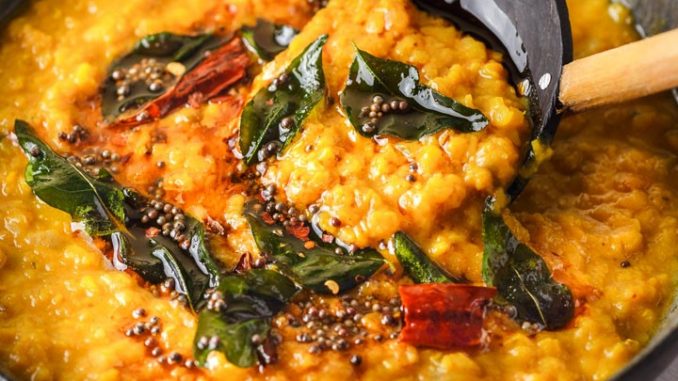
2nd stop: Trincomalee, Sri Lanka
Keshia’s mum’s Pol Sambol: another absolute favourite food of mine is ‘Pol Sambol’. I would sprinkle it on virtually anything edible but used to particularly love it smothered over scrambled eggs in Sri Lanka, adding a life-changing punch of sweet, sour and spiciness.
But I have never made a good job of creating it. Believe me I have tried! I think the way I have grated the coconut has been wrong. So I have turned to a culinary mentor within our school community – Nalagini Mahen – to aid me in providing this recipe, and I intend to try it myself next week, to accompany our Friday celebratory breakfast at home of scrambled eggs on toast.
From Keshia: ‘’We had it two nights ago with dosa! Keep in mind the recipe is catered towards people with a high spice tolerance so feel free to lower down some measurements to your liking.’’
- Grated coconut – 100g (fresh)
- Dried red chili – 8 to 10 depending how hot you would like it
- Small onion / Shallots – 5 to 7
- Curry leaves – 1 stem
- Ginger- half an inch
- Lime – As you need
- Salt – As you need
METHOD
Step 1
In a pan heat half a spoon of ghee or oil and sauté the following ingredients; curry leaves and red chilli but do not deep fry or burn.
Step 2
Take that out and then add shallots and ginger into the pan and toss in the remaining ghee/oil.
Step 3
When this is ready grind sautéed red chilli along with curry leaves and salt in any sort of blender (a food processor is recommended) then empty it.
Step 4
Grab a pestle and mortar. Add shallots and ginger into the mortar and grind until a fine pulp
Step 5
Add in your red chilli mix from the blender. Finally add in your coconut and grind with the pestle and mortar till as fine as you like. Squeeze in a lime or two.
Put in a jar and place in the fridge. Pol Sambol is used like a chutney.
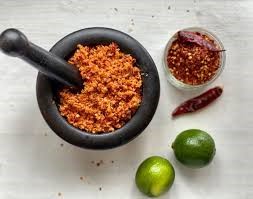
Shani’s Dhal, and Keshia’s mum’s Pol Sambol would go so beautifully together, if anyone is ever stuck for what to give me for my birthday…
3rd stop: Spain
Saffi’s Seafood Paella: definite glass in hand cooking this one (Bov’s late wife’s family initiated him into Spanish cooking.) Luxuriate while you watch it bubble and you can actually hear the Catalan rumba calling.
Music to accompany: Paco Pena
(for a longer playlist)
- 1L (4 cups) fish stock
- 1/2 tsp saffron threads
- 1 1/2 tablespoons olive oil
- 300g skinless firm white fish fillets, cut into thumb-lengthish pieces
- 1 chorizo, thinly sliced diagonally
- 1 red onion, thinly sliced
- 4 garlic cloves, finely chopped
- 2 teaspoons paprika
- 1 long fresh red chilli, thinly sliced
- 1 small red capsicum, thinly sliced
- 1 small yellow capsicum, thinly sliced
- 330g (1 1/2 cups) arborio rice – or any risotto rice alternative
- 125ml (1/2 cup) white wine
- 8 large prawns, unpeeled
- 200g squid tubes, thinly sliced into rings (I buy frozen)
- 80g (1/2 cup) frozen baby peas
- One lemon, wedge
- Chopped fresh continental parsley, to sprinkle
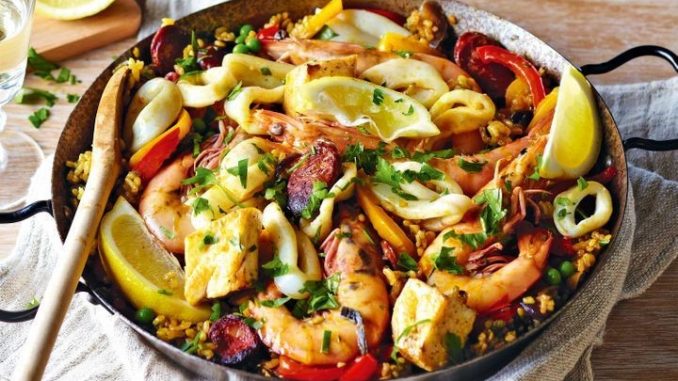
METHOD
Step 1
Bring stock and saffron to the boil in a saucepan over high heat. Remove from heat and cover to keep warm.
Step 2
Heat the oil in a paella pan or large frying pan over medium-high heat. Season fish. Cook, turning, for 2 minutes or until almost cooked through. Transfer to a bowl and cover.
Step 3
Add chorizo and cook, stirring, for 2 minutes or until brown. Stir in onion, garlic, paprika, chilli and combined capsicum for 4-5 minutes or until soft. Stir in rice for 1 minute. Stir in wine for 1 minute or until wine evaporates.
Step 4
Add stock mixture to pan, reserving 80ml (1/3 cup). Reduce heat to low. Cook, without stirring, for 15 minutes.
Step 5
Push prawns and squid into rice. Add the reserved stock. Cook for 10 minutes. Add fish. Cook for 5 minutes or until liquid is almost absorbed. Sprinkle with peas. Shove lemon wedges in the surface. Cover with foil. Rest for a few minutes and then devour with something crisp, snappy and refreshing.
4th Stop: India
Nazlee’s Tandoori leg of lamb: Another country we find ourselves returning to on our menu tour, with alarming regularity is, of course, India. Here I am going to share a mouth-watering dish from our very own Nazlee Haq, who teaches Maths at WHS. Like most meat dishes from Asia, prepare the marinade and allow it to infuse the day before cooking – not only does this aid the fragrances to percolate, but also tenderises the meat.
‘I have made this many, many times and it never fails to please! The key is the marinade, leaving the leg in the marinade overnight and cooking the leg on a long, low heat.’ Nazlee Haq
Music to accompany: Carnatic Music, Fusion music
(Norah Jones and Anoushka Shankar)
- 1 leg of lamb, around 2.5kg
For the marinade:
- 2 tsp coriander seeds
- 1 tbsp cumin seeds
- 1tsp black peppercorn seeds
- 250ml yoghurt
- 1 whole bulb of garlic, peeled and grated (I buy frozen cubes of garlic from the Asian section in big supermarkets, just as good and time saving. Would use three chunks for this recipe)
- 8cm piece of ginger, peeled and grated (again, you can buy the frozen version. Would use three chunks for this recipe)
- Juice from 1 lemon (or a few tbsps from a bottle)
- 1tsp red chilli powder
- 2tsp salt
- 2tbsp olive oil
- Generous handful of fresh, chopped coriander
METHOD
Step 1
The day before serving, score the lamb and trim excess fat but leave some as it will cook and keep the lamb juicy.
Step 2
Take the whole spices (cumin, coriander, peppercorn) and gently toast on a frying pan for no more than a minute – you should smell an aroma! Do not let them burn. In an electric grinder (I have a coffee for this) or a pestle and mortar, grind the whole spices. In a large bowl, mix the remaining ingredients.
Step 3
Put the leg of lamb in the roasting dish/pan and cover with the marinade. Get stuck in and rub the marinade into the grooves. Cover with clingfilm or foil. Leave in the fridge overnight.
Step 4
The next day, pre heat the oven to gas mark 4/180C/350F. Remove the covering from the roasting pan and add 150ml of water. Cover again with foil, making sure you seal the edges. Place the pan in the oven. Cook for 2¼ hours for lamb that is pink in the middle. I personally cook for at least another hour as like mine well done and at this point the lamb will be so tender it will melt off the bone. For the last 20 minutes of cooking I remove the foil and scoop out some of the juices to make a gravy. I place the lamb back in the oven to let it brown, if needed. If not, let it rest, covered whilst you make your gravy.
When ready, the meat should be very tender. We normally have this with rice, seasoned Greek yoghurt flavoured with chopped mint and coriander (raita) and a simple salad.

And to finish…
Thank you so much to Shani, Nalagini, Saffi and Nazlee for joining us in our home and on our travels around the world, by sharing these amazing family secrets with me, and now allowing me to share them with the whole WHS community.
If anybody does make it ‘around the world in 7 menus’, please do share your discoveries with @WimbledonHigh on social media and perhaps we can make our own bespoke WHS passport of culinary temptations. Or, if you try out any of the above, please send me a photograph, as sharing food with friends and family is something we massively miss, just as we miss our adventures overseas.
Thank you in advance, and safe travels all!

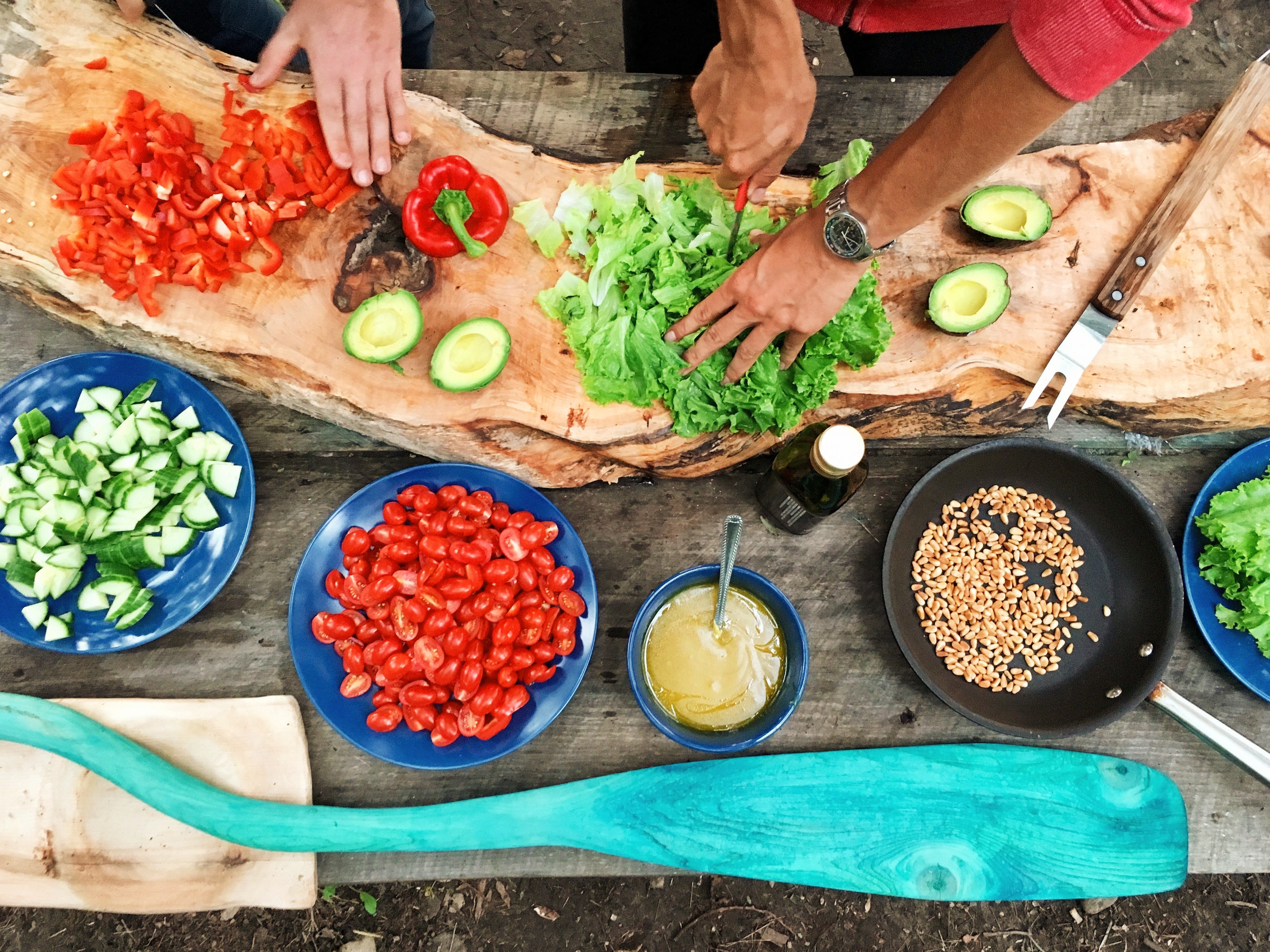

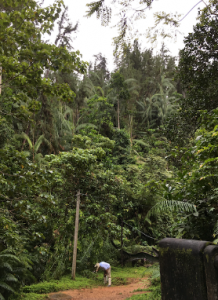 The Sinharaja Forest Reserve is a national park and a biodiversity hotspot in the southwest of Sri Lanka. It has been designated a Biosphere Reserve and World Heritage Site by UNESCO. There are 211 woody trees and lianas so far identified in the reserve, 66% of which are endemic, 20 of Sri Lanka’s 26 endemic birds are found here as well as half of Sri Lanka’s endemic mammals and butterflies.
The Sinharaja Forest Reserve is a national park and a biodiversity hotspot in the southwest of Sri Lanka. It has been designated a Biosphere Reserve and World Heritage Site by UNESCO. There are 211 woody trees and lianas so far identified in the reserve, 66% of which are endemic, 20 of Sri Lanka’s 26 endemic birds are found here as well as half of Sri Lanka’s endemic mammals and butterflies.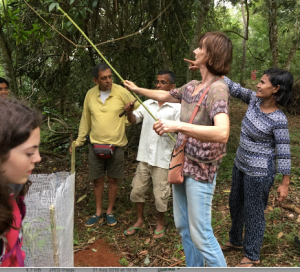 This Eco lodge encourages ecotourism.
This Eco lodge encourages ecotourism.